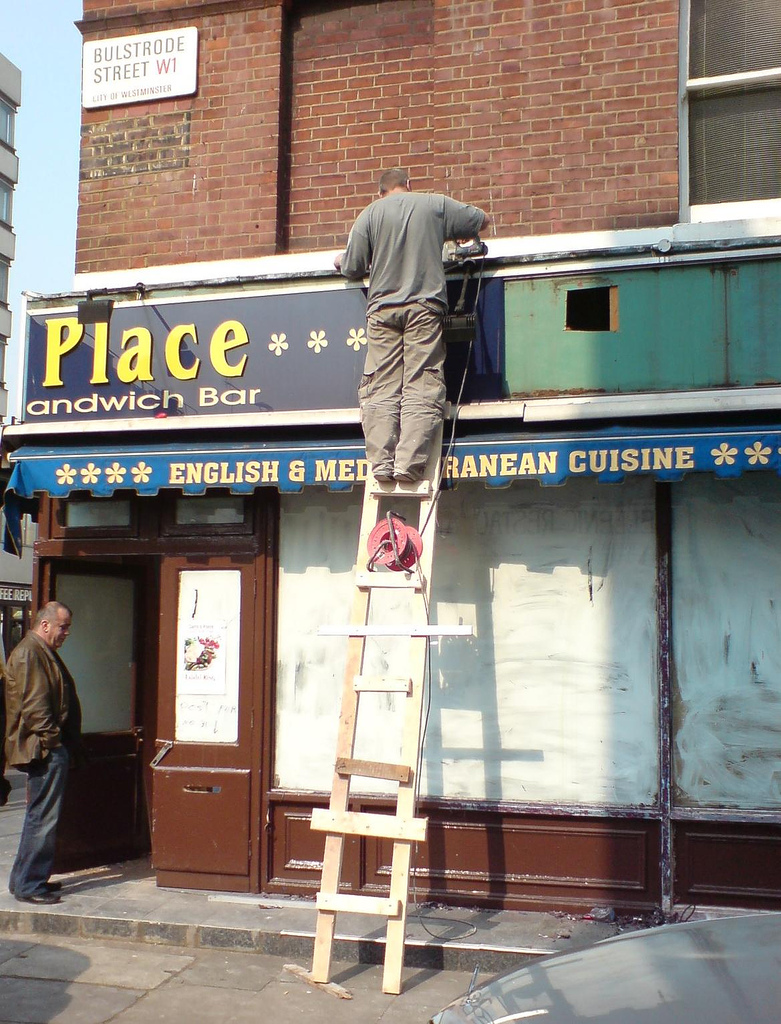 For over 10,000 years, the ladder has been helping mankind attain to greater heights, both literally and figuratively. Thanks to our runged servant, advanced construction, agriculture, and the retrieval of cats from trees have been made possible. For the most part, they have served us well over the millennia. However, although ladders are a safe alternative to cranes or jet packs, their improper maintenance and use can lead to severe injuries and even death: to wit, there are approximately 136,000 ladder-related injuries each year; and 8.5 percent of those require hospitalization.
For over 10,000 years, the ladder has been helping mankind attain to greater heights, both literally and figuratively. Thanks to our runged servant, advanced construction, agriculture, and the retrieval of cats from trees have been made possible. For the most part, they have served us well over the millennia. However, although ladders are a safe alternative to cranes or jet packs, their improper maintenance and use can lead to severe injuries and even death: to wit, there are approximately 136,000 ladder-related injuries each year; and 8.5 percent of those require hospitalization.
Avoidance of these injuries depends upon adherence to safety guidelines; and this adherence depends, in large part, upon knowing what to avoid. For a brief list of the circumstances that most often lead to ladder-related injuries, read on:
Table of Contents
1. Construction
The construction industry seems to be a breeding ground for ladder-related injuries: Falls are the leading cause of occupational fatality for those in the construction industry, and 23 percent of all ladder-related injury victims work in construction. Forty percent of these ladder accidents on construction jobs result when the ladder moves beneath the person. Often, this movement stems from misuse of the ladder by the employee. However, this does not necessarily exempt them from compensation in the event of an injury, as much of this misuse is the result of…
2. Lack of Adequate Training
All employers in industries that employ ladders are obligated by law to give training on their proper use. Current statistics would suggest that this is not happening as often as it should: “Examination of available data indicates that these accidents are primarily the result of noncompliance with existing OSHA standards.” To be precise, in 66 percent of ladder-related injuries, the injured individual had not been given ample training.
3. Defective Ladders
The United States leads the world in ladder deaths, according to the World Health Organization. OSHA reports that 19 percent of ladders in use when an injury occurs have defects that contribute to such accidents. Some of this is due to poor manufacturing; some of it is natural to wear and tear. Unlike many things, ladders cannot be used after their long service has begun to manifest itself in the form of loose or bent joints. Before a ladder is put to use, it should be ascertained that it doesn’t wobble, that all the rungs are fastened tightly, and that its position can be securely fixed.
4. Unwieldy Cargo
Ladders, for all their utility, were not made for multitasking. In ladder-related accidents, the person injured was carrying something while the ladder was in use. Since a ladder’s stability depends on certain weight distribution and the use of both hands, occupying one’s arms with freight interferes with the ability to make it to the top without incident.
5. Improper Positioning
When a ladder is not properly, it will not work properly. Ladders should be extended to three feet above the landing level (to ensure that dismounting the ladder is as safe as possible), and portable ladders should be secured at both top and bottom to prevent slippage or overextension. Different kinds of ladders are made to serve different purposes; misuse only invites trouble.
6. Ladder Type
Likewise, using the wrong type of ladder for the wrong task is foolhardy. A stepladder is not suitable for the job of a leaning ladder; and vice versa. Not all ladders are the same height, can bear the same weight, etc. Some ladders are easier to misuse than others—portable and free-standing ladders cause 65 percent of ladder-related injuries. As simple as they may look, ladders are not intuitively understood. Always make sure you know the specifics of a ladder’s capabilities beforehand; never put it to the test.
For those who have gotten on a ladder’s bad side, the last word has not been spoken. If you have cause to suspect that a problem with the ladder, misinformation, or lack of information has led you to serious injury, you may be entitled to resources for recovery from other sectors than your own overburdened wallet. For a discussion of your situation and possible legal recourse at no cost, call personal injury attorneys Good Guys Injury Law at (801) 506-0800.
Image courtesy of Elliot Moore